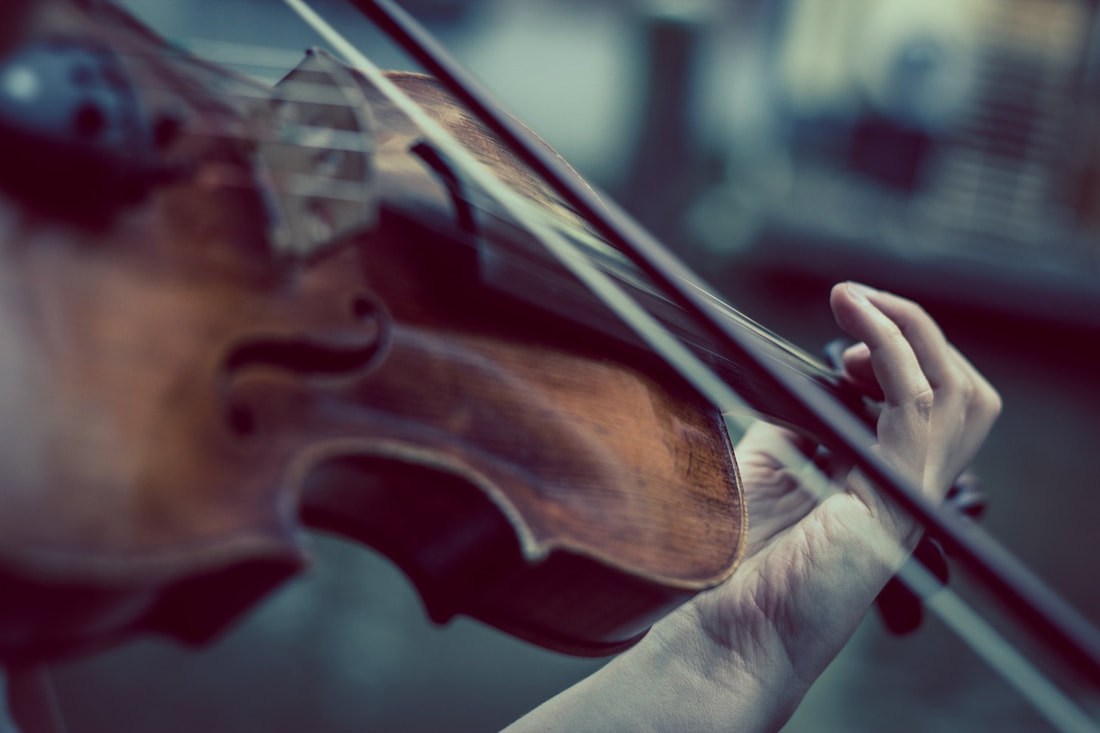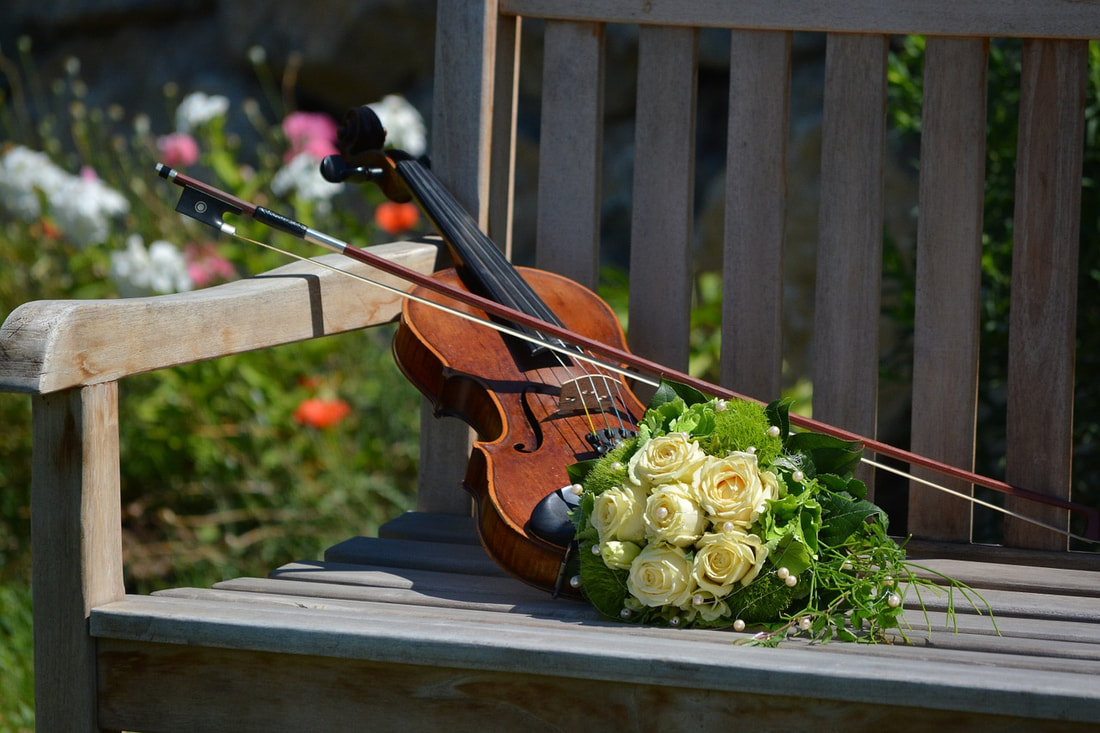|
At the center of today’s symphony orchestra is the string section. The family group of stringed instruments includes the violin, the viola, the cello, and the double bass. This group’s defining features are strings, frets, and bows. The word “violin” is actually a diminutive term for “viola,” meaning that the instrument descends from the older viol family. The original Italian term for the latter instrument is “viola da braccio,” or “viol for the arm.” Held against the musician’s shoulder, this is the type of viol from which the modern viola developed. The following are some interesting facts about the always lyrical, expressive, and resonant violin: 1. It came into being during the Middle Ages.Some experts believe that the introduction of the violin into Europe began with the stringed instruments of Arab-ruled Spain in the early Middle Ages. The instruments of the cultures of the Iberian Peninsula at the time included the rabab and its descendant, the rebec. The latter had three strings, was shaped like a pear, and was often played with its base resting against a seated player’s thigh. Musicologists consider Central Asia the most likely ultimate origin for the bowed chordophone instruments that began to proliferate throughout Europe and Western Asia by the early Middle Ages. The Polish fiddle may be one of the direct progenitors of the violin. In addition to the rebec, other medieval instruments that led to the development of the violin included the lira da braccio and the fiddle. The shape of the lira da braccio, in particular, with its arching body and low-relief ribs, prefigured today’s familiar violin. The lira da braccio’s shallowness of body likely led to the addition of a sound post, a device particular to the violin and later to the viols. The sound post is a small, vertically positioned dividing wall that separates the instrument’s front and back in order to keep the pressures exerted on the strings from causing the belly arch to cave in. Musicologists point out that this sound post contributes to the richness of the violin’s lilting, singing tone, as it harmonizes the workings of the body and strings as a unit. By the end of the medieval period, a fiddle of a type that would be recognizable today appeared on the scene. 2. The Amati family refined the violin during the Renaissance.According to paintings of the time, violins with three strings were being played by at least the early 16th century. Lute-maker Andrea Amati of Cremona in Italy produced several violins with three strings at about this time. At about the middle of the 1500s, violins with top E-strings had appeared. It was then that the cello—or “violoncello”—and viola also branched out of the viol family. Bowed instruments developed further in tandem with the Renaissance, particularly in Italy, with the Amati family being the most famous violin-makers of the 16th and early 17th centuries. The Amatis’ great innovation was the development of the thinner, flatter, violin body that produced a particularly appealing sound in the soprano register. 3. Stradivari established impeccable standards.While the Amatis played a major role in standardizing the general size and proportions of the stringed instruments we know today, one of their apprentices, Antonio Stradivari, would carry forward and expand on their technical skills. By the late 1600s, Stradivari had created a wholesale alteration in violin proportions through elongating the instrument. His now-standard form for its bridge and general proportions has rendered it capable of producing sounds of extraordinary power and range. At one time, it was believed that Stradivari’s violins drew their range and depth of tone from the secret formula he used for their varnish. No one, then or now, has ever figured out that formula. Today’s music historians note that the distinct sound of Stradivari’s violins most likely derived from the quality of the vibration facilitated by thicker wooden top and rear plates, as well as from the configuration of miniscule pores in the wood. However, many experts additionally point out that the master’s varnish did indeed contribute to the overall quality of the sound. 4. Virtuosity became the goal for violinists in the 19th century.Into the 1800s, violin-makers continued to try new ways to construct the instrument and refine its proportions, angles, and arches. At this time, the repertoire for solo and accompanied violin began to require high levels of skill and dexterity, and violinists such as Niccolò Paganini became known for executing tremendously complex passages. Paganini, who cultivated the image of the composer-musician as a wild Romantic, amassed an enormous and devoted fan following in his day. Such virtuosity was further enhanced when Louis Spohr invented the chin rest sometime around 1820, thus enabling a player to more comfortably hold and manipulate the instrument. The addition of a shoulder rest additionally contributed to this ease of handling. 5. There are many modern-day virtuosos.A number of 20th- and 21st-century players have rivaled Paganini in skill and popularity. Among these are the child prodigy and older grandmaster Yehudi Menuhin, who died in 1999 at age 82. Menuhin’s technical proficiency dazzled audiences, and he became known for his championing of contemporary composers such Béla Bartók. Itzhak Perlman, born in 1945, remains one of the world’s finest living violinists, known for his focus on detail. While still in his teens, Perlman made his debut at Carnegie Hall. A Grammy Award winner for lifetime achievement, he has since played with jazz and klezmer groups, and performed music for motion pictures. In addition to his work as a conductor, he has also served as a teacher of gifted young musicians. 6.Today, the violin encompasses a mosaic of musical cultures.Like Perlman, today’s violinists perform not only classical music, but also an entire world of country, bluegrass, folk, rock, and world music. Throughout North Africa, Greece, the Arab world, and the southern part of India, the violin and viola continue to be very popular. The Roma have a long tradition of using the violin in communal music-making, as do the Jews through the tradition of klezmer. The violin remains widely used in American and European folk compositions as well.
Comments are closed.
|
Photo used under Creative Commons from Marina K Caprara


 RSS Feed
RSS Feed
